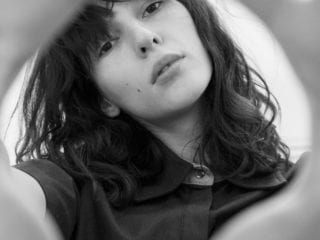During December 2019, I began training to run my first half marathon. With five months to prepare, I planned out each day’s mileage and mapped out weekly goals. I dodged snow piles, braved 10 degree wind chill and wiped raindrops from my eyes. By March, I was running 10 miles a day and felt ready to conquer the race, which was scheduled for the next month.
Then, COVID-19 happened.
Like many others, I felt both devastated and defeated as the pandemic thwarted a major life goal of mine. With the race canceled, I immediately lost all motivation to continue running. In fact, I stopped running completely while trying to adjust to a new tempo of life.
I stopped running completely while trying to adjust to a new tempo of life.
Perhaps something similar happened to you during the pandemic or other obstacles have caused you to take a break from exercise. Establishing a regular rhythm of exercise after a long hiatus is an upward battle. Just the idea of starting itself can feel overwhelming.
Although I don’t hold any certifications related to physical fitness, my own experiences tell me that a regular habit of exercise increases my energy and improves my mental health. Slowly, I began to enjoy exercising again. I rebuilt the endurance and strength that I lost during my break, even though it looked different this time around.
Establishing a regular rhythm of exercise after a long hiatus is an upward battle.
Here are a few things that helped me along the way:
I figured out my reason for exercising.
In the past, I found my motivation in tangible accomplishments that had a beginning and end, like finishing a race. However, with no foreseeable race in the future, I realized that I missed the way exercise made me feel. Working out allows me to sleep better at night, gives me more energy to spend on people who I love and provides stability for my mental health.
Reflecting on what exercise means for you can help build the momentum needed to start exercising again. Your “why” might look completely different than mine, but finding holistic motivation is important. Chasing an ideal waist measurement or pants size places you on a meandering track with no end. The ever-changing, unrealistic nature of cultural beauty standards ensures that as women, we never quite measure up.
Chasing an ideal waist measurement or pants size places you on a meandering track with no end.
I experimented until I found a form of exercise that worked for me.
As a child, several hours of my day were reserved just for play. Whether exploring my backyard or building forts inside, playing expanded my imagination and provided an outlet for pent-up energy. We consider play an integral part of child development, but we tend to overlook its significance as adults.
Like childhood play, exercise should be fun and enjoyable. Running on a treadmill or lifting weights at the gym are not the only options for physical fitness.
If you enjoy the outdoors, consider taking a walk each day, riding a bike or rollerblading. If you have a competitive streak, try tennis or join a sports league. If the indoors are more your style, swimming laps in an indoor pool or practicing yoga might suit you best. In this season of life, I find that weight training helps me to feel strong, but I also love a long bike ride or basketball game every once in a while.
I began slowly.
After a long break, you may be tempted to jump back into a hardcore fitness routine, but the key is to establish a sustainable rhythm. When I started exercising again, I only worked out two or three days a week. As I gradually increased my workout days, I tried not to be too hard on myself if I missed a day.
Slowly building up your endurance and strength helps to prevent injuries from setting you back. Leveling up little by little ensures that you can maintain a new fitness routine and not burn out quickly by overexerting yourself.
The key is to establish a sustainable rhythm.
I asked a friend to join.
At the end of the day, most hard things are easier (and more fun!) with people by your side. Invite a friend to catch up over a walk or run in your neighborhood. Continue your regular coffee dates, but this time, throw in a stop at the gym beforehand.
If you’re looking to expand your circle, joining a workout class can be a great way to meet people and add structure to your fitness routine. Getting back into exercise after a long break can be challenging, but remember: you don’t have to do it alone!
How have you gotten back in the rhythm of exercise after a long break? What is your “why” behind pursuing health and fitness?
Image via JUCO, Darling Issue No. 20











